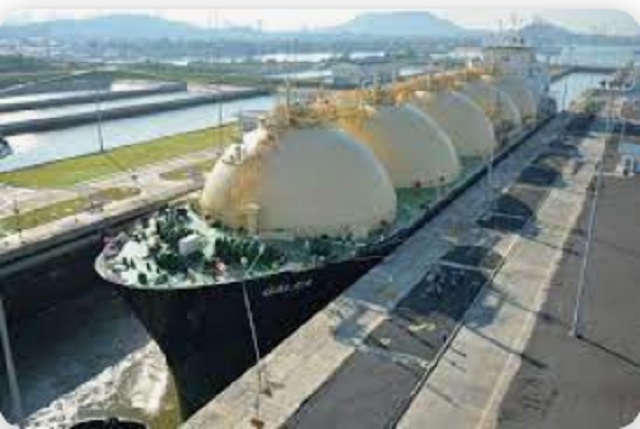Great Reset
Terrorists Welcome: Chronic counterterrorism lapses at the border demand investigation

Published April 22, 2024 by the Claremont Institute’s The American Mind
Author: Todd Bensman
The latest release into the American interior of an FBI terrorist suspect who illegally crossed the U.S.-Mexico border—a twice-freed Afghan national man free to roam America for 11 months until his capture—demands that the federal government regard this patterned problem as a chronic national security emergency requiring elevation to the highest priority within the intelligence community, federal law enforcement, and Congress.
|
|
The case of the 48-year-old Mohammad Kharwin, whom an overwhelmed Border Patrol freed into America on March 10, 2023 before agents could confirm the FBI watch list hit that initially flagged him and whom a swamped Texas immigration court freed a second time in February, is the seventh example of its kind that can establish, just from disparate public records, a mortally dangerous failure pattern.
More cases of accidental Border Patrol releases of illegally crossing terrorism suspects, who did not reach the public record, are highly likely if not certain.
But this latest miss-and-release propels the problem well beyond the critical mass threshold justifying coordinated high-priority government intervention, even if Congress must politically force it, before the next one—or those still roaming the country lost to authorities even now—needlessly kill and maim Americans.
By current public accounts, an initial Border Patrol database check flagged Kharwin for membership in Hezb-e-Islami, which the U.S. Director of National Intelligence describes as a “virulently anti-Western insurgent group,” when he illegally crossed the California border in March 2023. He was among 23,286 illegal aliens caught crossing that month in what would turn out to be a record-breaking year for the agency’s San Diego Border Sector. All told, there were 230,941 illegal crossers caught in 2023, up nearly 60,000 from 2022 and 90,000 more than 2021.
That extraordinary traffic no doubt strained all normal Border Patrol counterterrorism and vetting processes.
Instead of keeping Kharwin detained as a “special interest alien,” tagged until standard face-to-face interviews and corroboration of the initial hit was complete, Border Patrol agents under orders from Washington, D.C. waved him through like millions of other illegal crossers on “Alternatives to Detention” (ATD) personal recognizance papers, where they agree to voluntarily report later to ICE in a city of their choice.
NBC reports that Border Patrol never even informed ICE of the initial FBI watch list flagging; that’s evidently how the same collapsed border management system missed a second opportunity to catch Kharwin in late January of this year, when he showed up before an immigration judge in a Pearsall, Texas, ICE detention facility for a hearing. Perhaps because ICE still didn’t have the initial terrorism flag hit, that agency’s court lawyer representative did not report it to the judge, or appeal, when Kharwin was ordered released on $12,000 bond for a distant 2025 hearing.
“The judge placed no restrictions on his movements inside the U.S.” in the meantime, NBC reported.
Somehow, the FBI figured all of this out and got word to ICE agents to find and arrest Kharwin, which they did a month later, on February 28, in nearby San Antonio.
An Established New National Security Threat Pattern
Terrorism threat border lights have been blinking red for some time now in a non-specific way, especially since the U.S. Customs and Border Protection agency in March 2022 began publishing “Terrorist Screening Data Set Encounters” by the month on its public-facing website. Those began breaking all national records when the Biden government took office in January 2021, when apprehended illegal border crossers on the FBI watch list ballooned from three during Trump’s last fiscal year in office to 15, then by another 98 in fiscal 2022, then 169 in fiscal 2023, and another 75 so far in fiscal 2024.
Through March 2024, Border Patrol caught 342 while partnered federal agencies like the FBI and ICE intelligence presumably investigated and dealt with each. That they did so is less a good national security story than an unacceptable sampling of much bigger flows of watch-listed illegal aliens coming into America who are not caught and handled. If some two million of these so-called “got-aways” went through since 2021 (like Kharwin evidently tried to), more suspected terrorists on the FBI watch list are almost certainly among them.
But short of vastly reducing the millions-per-year border crossings by restoring former president Donald Trump’s discarded policies, the Biden Administration could at least be forced to triple down on its counterterrorism resources at the southern border.
In recent months, the terrorism threat at the border has generated some public concern, but never explicitly about the preventable accidental releases of terrorist suspects authorities later had to chase down.
In September 2023, for instance, I testified before the U.S. House Subcommittee on the Judiciary about the accidental releases I knew about at the time. Mine was indeed a rare warning that named the accidental-release problem in juxtaposition with my 2021 book America’s Covert Border War, which revealed counterterrorism programs at the border that have kept the nation safe from infiltrated attacks for nearly 20 years. I told the members that Biden’s border crisis had severely compromised those old programs, caused a spate of accidental terror suspect releases, and elevated the threat of terror attack as a result.
The Biden Administration’s own 2024 Homeland Threat Assessment warns, with far less specificity, that “terrorists may exploit the elevated flow and increasingly complex security environment to enter the United States” and that “individuals with potential terrorism connections continue to attempt to enter the Homeland illegally between ports of entry…via the southern border.”
With even less specificity, in his latest testimony to Congress about what he regards as a rising terrorist border infiltration threat, FBI Director Christopher Wray told the Senate Select Committee on Intelligence that a “wide array of very dangerous threats…emanate from” the southwest border, including the designated terror group ISIS.
Despite the variably specific warnings about the border infiltration threat, the ever-growing number of known accidental-release cases like Kharwin’s and the ones I told the subcommittee about remain broadly unrecognized as the unique emerging threat problem these cases indicate. Probably because no one has been killed yet as a consequence, few federal agencies or homeland security committee lawmakers seem interested in calling it out.
Case Candidates for Investigation
To date, only one federal investigation has produced a public report branding the problem, remarkable but forgotten or given short shrift by major U.S. news media, although I did write about it. That eye-opening document was the Department of Homeland Security’s inspector general’s office report about the April 19, 2022 crossing and mistaken release of a Colombian on the FBI watch list. ICE agents were not able to track him down to Florida for two long weeks.
Its key finding was that Border Patrol and ICE agents couldn’t do normal counterterrorism protocols because they were simply too “busy processing an increased flow of migrants.”
But these six other cases qualify as investigation-worthy:
| Read the rest here |
International
Trump admin wants to help Canadian woman rethink euthanasia, Glenn Beck says

From LifeSiteNews
Jolene Van Alstine, approved for state-sanctioned euthanasia after enduring long wait times to receive care for a rare parathyroid disease, is in need of a passport to enter the U.S.
Well-known American media personality Glenn Beck says he has been in touch with the U.S. State Department to help a Canadian woman in Saskatchewan reconsider euthanasia after she sought assisted suicide due to long medical wait times to address her health problems.
As reported by LifeSiteNews on Tuesday, Canadian woman Jolene Van Alstine was approved to die by state-sanctioned euthanasia because she has had to endure long wait times to get what she considers to be proper care for a rare parathyroid disease.
Van Alstine’s condition, normocalcemic primary hyperparathyroidism (nPHPT), causes her to experience vomiting, nausea, and bone pain.
Her cause caught the attention of Beck and many other prominent Americans and Canadians on X.
In an update today on X, Beck said, “Jolene does not have a passport to gain legal entry into the U.S., but my team has been in touch with President (Donald) Trump’s State Department.”
“All I can say for now is they are aware of the urgent life-saving need, and we had a very positive call,” he added.
Beck had said before that he was in “contact with Jolene and her husband” and that he had “surgeons who emailed us standing by to help her.”
As of press time, neither the State Department nor other officials have not yet confirmed Beck’s claim that he has been in touch with them.
As a result of Van Alstine’s frustrations with the healthcare system, she applied for Canada’s Medical Assistance in Dying (MAiD) and was approved for January 7.
As reported by LifeSiteNews, over 23,000 Canadians have died while on wait lists for medical care as Prime Minister Mark Carney’s Liberal government is focused on euthanasia expansions.
A new Euthanasia Prevention Coalition report revealed that Canada has euthanized 90,000 people since 2016, the year it was legalized.
As reported by LifeSiteNews recently, a Conservative MP’s private member’s bill that, if passed, would ban euthanasia for people with mental illness received the full support of the Euthanasia Prevention Coalition.
Censorship Industrial Complex
Conservative MP calls on religious leaders to oppose Liberal plan to criminalize quoting Scripture

From LifeSiteNews
Quoting the Bible, Quran, or Torah to condemn abortion, homosexuality, or LGBT propaganda could be considered criminal activity
Conservatives are warning that Canadians should be “very afraid” of the Liberals’ proposal to punish quoting Scripture, while advising religious leaders to voice their opposition to the legislation.
During a December 6 session in Parliament, Conservative Member of Parliament (MP) Larry Brock warned Canadians of the very real threat to their religious freedom thanks to proposed amendments to Bill C-9, the “Combating Hate Act,” that would allow priests quoting Scripture to be punished.
“Do Christians need to be concerned about this legislation?” MP Bob Zimmer questioned. “Does it really threaten the Bible and free speech in Canada?”
“They should be very afraid,” Brock responded. “Every faith leader should be very afraid as to what this Liberal government with the support of the Bloc Quebecois wishes to do.”
“As I indicated, religious freedom is under attack at the hands of this Liberal government,” he declared.
Brock stressed the need for religious leaders to “speak out loud and clear” against the proposed amendment and contact their local Liberal and Bloc MPs.
Already, the Canadian Conference of Catholic Bishops penned an open letter to the Carney Liberals, condemning the proposed amendment and calling for its removal.
As LifeSiteNews reported earlier this week, inside government sources revealed that Liberals agreed to remove religious exemptions from Canada’s hate speech laws as part of a deal with the Bloc Québécois to keep Liberals in power.
Bill C-9, as reported by LifeSiteNews, has been blasted by constitutional experts as empowering police and the government to go after those it deems to have violated a person’s “feelings” in a “hateful” way.
Now, the Bloc amendment seeks to further restrict free speech. The amendment would remove the “religious exemption” defense, which has historically protected individuals from conviction for willful promotion of hatred if the statements were made “in good faith” and based on a “religious subject” or a “sincerely held” interpretation of religious texts such as passages from the Bible, Quran, or Torah.
As a result, quoting the Bible, Quran, or Torah to condemn abortion, homosexuality, or LGBT propaganda could be considered criminal activity.
Shortly after the proposed amendment was shared on social media, Conservatives launched a petition, calling “on the Liberal government to protect religious freedom, uphold the right to read and share sacred texts, and prevent government overreach into matters of faith.”
Already, in October, Liberal MP Marc Miller said that certain passages of the Bible are “hateful” because of what it says about homosexuality and those who recite the passages should be jailed.
“Clearly there are situations in these texts where these statements are hateful,” Miller said. “They should not be used to invoke or be a defense, and there should perhaps be discretion for prosecutors to press charges.”
His comments were immediately blasted by Conservative politicians throughout Canada, with Alberta provincial Conservative MLA and Minister of Municipal Affairs Dan Williams saying, “I find it abhorrent when MPs sitting in Ottawa – or anyone in positions of power – use their voice to attack faith.”
-

 Business2 days ago
Business2 days agoCanada Can Finally Profit From LNG If Ottawa Stops Dragging Its Feet
-

 Automotive21 hours ago
Automotive21 hours agoThe $50 Billion Question: EVs Never Delivered What Ottawa Promised
-

 National2 days ago
National2 days agoLiberal bill “targets Christians” by removing religious exemption in hate-speech law
-

 Health1 day ago
Health1 day agoUS podcaster Glenn Beck extends a lifeline to a Saskatchewan woman waiting for MAiD
-

 Local Business18 hours ago
Local Business18 hours agoRed Deer Downtown Business Association to Wind Down Operations
-

 Energy2 days ago
Energy2 days agoLNG NOW! Canada must act fast to prosper in changing times
-

 C2C Journal20 hours ago
C2C Journal20 hours agoWisdom of Our Elders: The Contempt for Memory in Canadian Indigenous Policy
-

 Censorship Industrial Complex1 day ago
Censorship Industrial Complex1 day agoLiberals gain support for ‘hate speech’ bill targeting Bible passages against homosexuality






